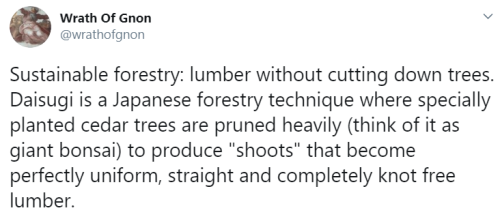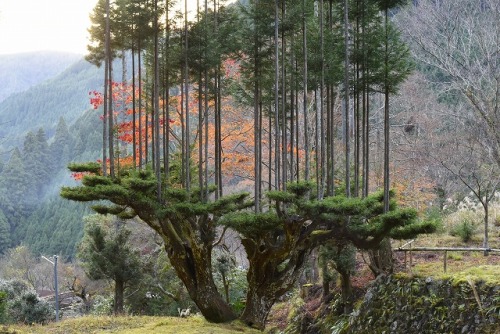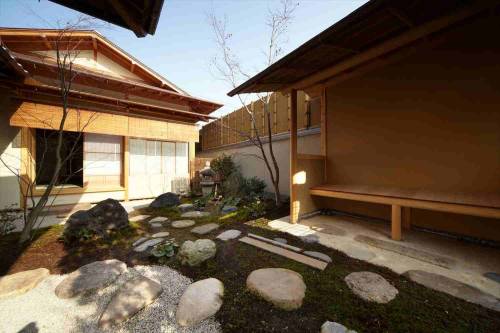frustrationinexcelsis:It’s interesting to not that similar techniques have been developed around the
frustrationinexcelsis:It’s interesting to not that similar techniques have been developed around the world, for fairly similar purposes. In Europe, especially in England, it’s called coppicing or pollarding, depending on the height of the cut – if it’s done at ground level it coppicing, and if it’s at the top of the trunk, like with daisugi, it’s pollarding. It’s not entirely clear how old this practice is – it may go back to the neolithic – but it’s been practiced for a very long time. Unlike daisugi, it’s used primarily to obtain firewood, livestock feed, poles and small-scale lumber, although sufficiently-aged coppices do produce usable timber. You know the weird way some trees look, with knobby trunks and bristly masses of thin branches? That’s regrowth after pollarding.This process also forces trees to “reset” to young tissue growth, which effectively counteracts their aging process – continuously coppiced or pollarded tree stools can reach immense ages.What is particularly interesting about this practice is its environmental impact. What happens with these practices is that a woodland is divided into lots, and each lot is harvested in turn while the others are allowed to regrow, creating a sort of palette of trees at different stages of regrowth. A pollarded or coppiced woodland has wildly separated trees and, when freshly harvested, an open canopy that lets in a lot of light, creating an open forest floor that’s quickly colonized by brambles and flowering plants that wouldn’t do well in the shade – things that normally live in forest edges and clearings, but which can now inhabit the entire plot – alongside a variety of animals drawn to their fruit and flowers, creating a very ecologically productive environment. The canopy eventually closes before the next harvesting, but wildlife can simply move along with the harvesting cycle to find new habitat further down the sequence.Note that this creates a distinct environment from true old-growth woodland, which is referred to as high forest – an overgrown coppiced wood doesn’t immediately become that, because it lacks the differently-aged trees, deadwood, and openings in the canopy of a mature forest. High forests are a distinct, also productive habitat, but overstood coppices tend to be fairly sterile and are usually either re-coppiced or, if that’s not viable in the long-term, have a few trees cut and left to lay to speed their development into a high forest.Keep in mind that this used to be an extremely prevalent method of tree management for the majority of European history, and remains such in a lot of places. Western nations don’t really have any excuse for being wasteful with resources like we are now, when we used to be just as competent at managing ours as anyone else.(Also, purely as linguistic trivia: this is why a small group of trees is called a “copse” – because it’s something you coppice.) -- source link







